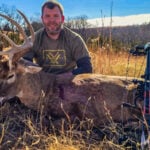Bowhunters can prove to be an opinionated bunch. There are equipment dogmatists, who believe their specific equipment choices or shooting style are the only way, forgetting that variety makes the world go ‘round. But other persistent arguments are just wrong, or at least quite flawed by bias. Here’s a dozen to contemplate as we work toward debunking bowhunting myths.
Wide-Cutting Broadheads Always Result in Shorter Blood Trails
On paper this appears sound, that a mechanical broadhead opening to 1 ¾ inches, for example, would cause more hemorrhaging and faster bleed-out than a fixed-blade with a cutting diameter of, say, 1 1/8-inch, thus shorter blood trails. Intuitively this makes sense. But it doesn’t reflect reality.
The wide-cut believers don’t take into account imparted shock and a deer’s natural fight-or-flight responses. Aggressive, wide cutting broadheads smack deer harder, imparting felt energy akin to a punch to the ribs. Sleeker heads slip right through, sometimes without deer even knowing they’ve been hit.
An aggressive broadhead, then, is more likely to spook animals via this felt energy transfer, eliciting a shot of adrenaline that fuels longer, harder runs. Yet I’ve seen animals hit with streamlined cut-on-contact or minimalist “mini” heads act as if they were completely unaware of being terminally hit. This isn’t based on limited antidotal evidence. Living in Idaho, where mechanicals aren’t legal for big game, most of the animals I shoot—whitetails, elk, bears—require no trailing, expiring within sight. Granted, wider-cutting heads often hasten recovery on marginally-hit animals, but when hit through vitals wider doesn’t always equate to faster recovery.
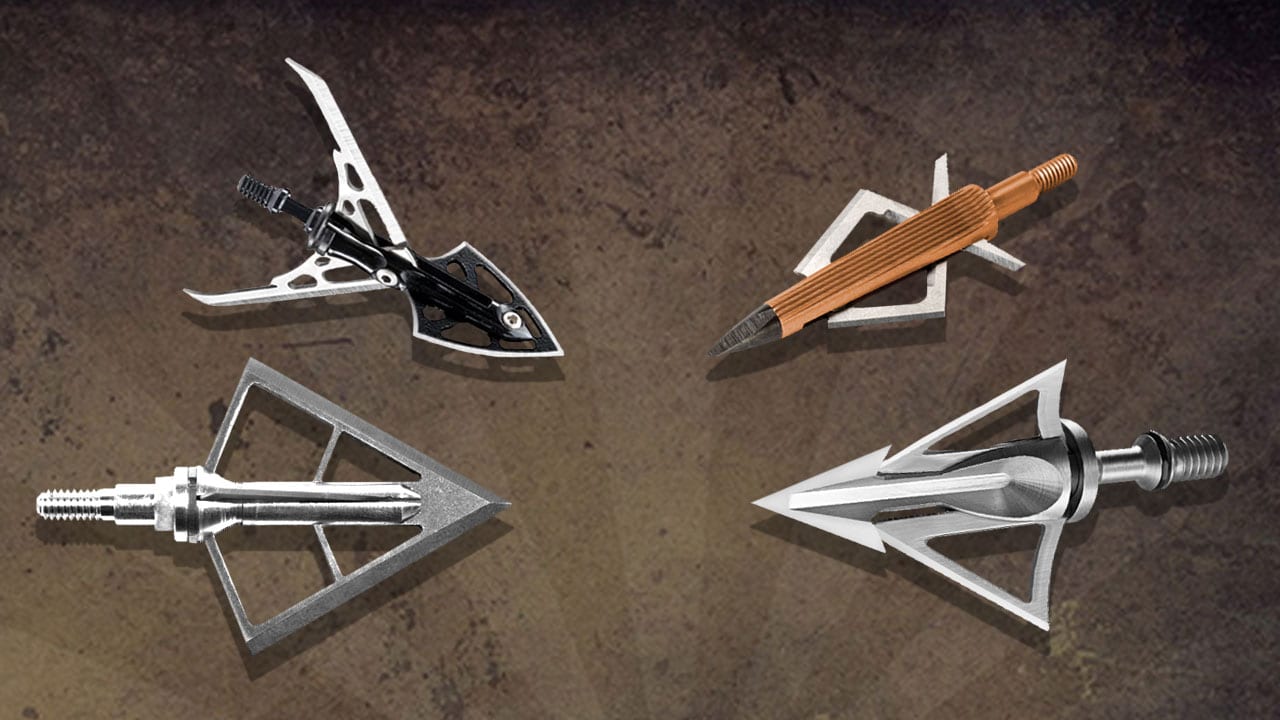
Are wide cutting broadheads the best bet?
Field Points & Broadheads Always Impact Differently
If a reasonably-designed broadhead, guided by a reasonable amount of fletching, impacts differently than field points, your bow needs more tuning attention. I’m not including radical broadhead designs, say a fixed blade cutting in excess of 1 ¼ inches, but most mechanicals and fixed-blades less than 1 3/16 inches wide. I’m also talking within margins most of us are realistically capable of producing—not shooting-machine precision.
Fine tuning modern compounds is both easier and more difficult than it once was. Easier because today’s bows are made to tighter tolerances and with more efficient and synchronized cam systems, more critical because of the speeds now generated. Adequate fletching surface area is vital (a 3:1 ratio, fletching-to-blade surface area is a good rule of thumb), as many want to apply the minimum amount necessary instead of hedging bets with more than enough. A drop-away rest helps, arrows contacting rest arms 50 to 70 percent less time, giving you less time to introduce human error. But serious bowhunters go beyond eye-ball center-shot alignment and quick paper tuning. My book “The Bowhunter’s Guide to Better Shooting” includes an entire chapter on super tuning—or hand the task off to a qualified bow technician.
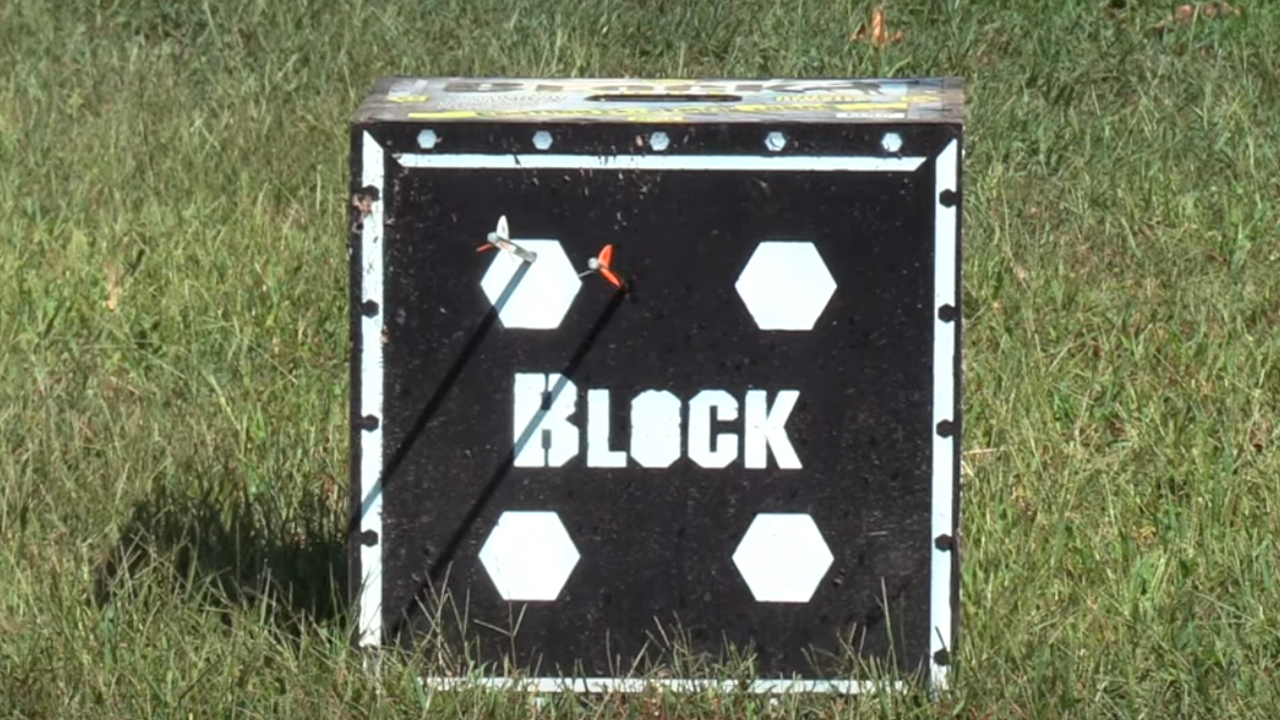
A well tuned bow will tighten up those broadheads that fly away from your field point.
Simple Traditional Bows Require No Tuning
I don’t know where people get this idea, but in many ways trad bows require more careful tuning than modern compounds. This starts with arrow spine and combined point weight, complicated by the need to have a couple different spine-rated arrows on hand and many point weights. You’ll find a very specific deflection grade and point-weight combination produces the best results with your particular bow, draw weight and length, finger protection (glove vs. tab) and shooting style (split-fingers vs. three fingers under, for instance). Minimal 15 to 20 percent F.O.C. also helps single-string arrows fly straighter and penetrate deeper. This is 70 percent of the equation.
The remainder involves brace-height and nocking-point positioning determined through tedious trial-and-error experimenting, and to a lesser degree strike-plate thickness. A trad bow should center up to your chosen aiming point or “spot.” Different nocking points, higher or lower, and brace heights dictate impact. Brace height also effects feel and performance (based on draw length). Altering strike-plate thickness, thinner (I’ve used duct tape) or thicker (leather) often helps slightly off-spine arrows fly straighter (thinner for over-spined arrows, thicker for under-spined). You should see nothing but nock after release, and arrows that automatically cover your spot, or at least center up horizontally.
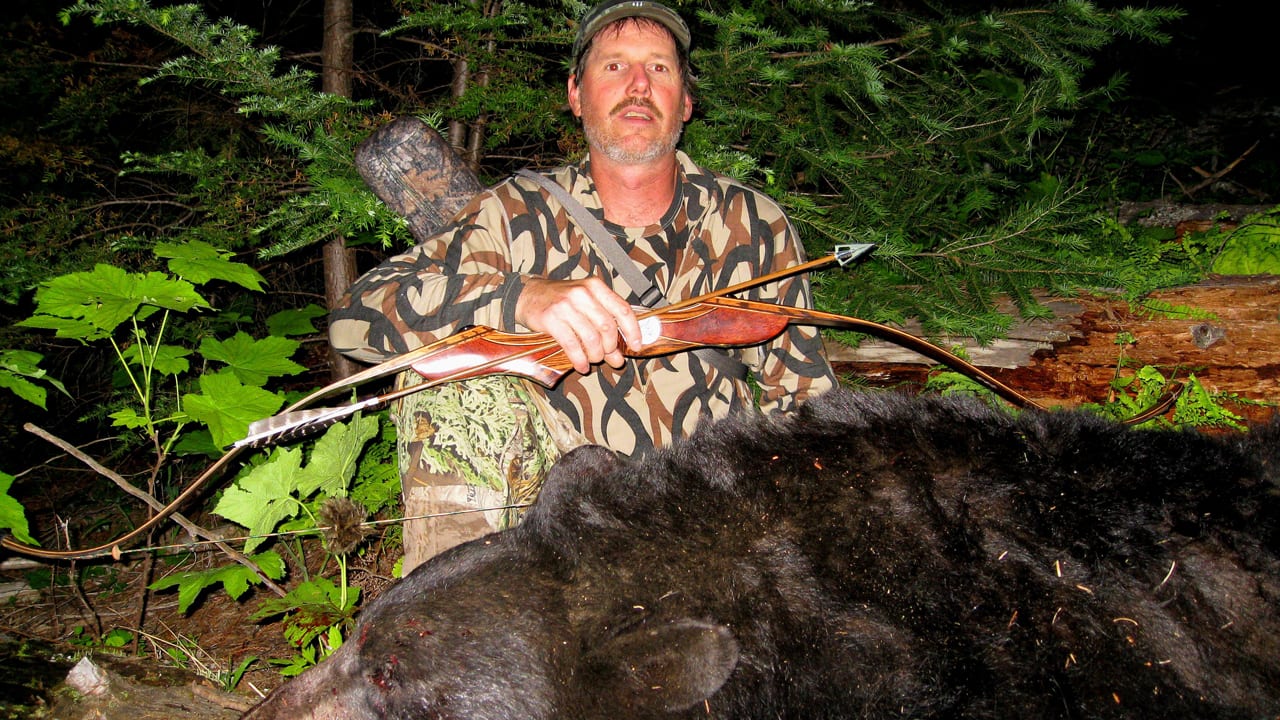
Do trad bows actually need tuning?
Hybrid Cams Never Go Out of Tune
Granted, today’s hybrid cam systems and the few surviving single-cam designs are much less fussy about tuning perfection than older dual-cams, but they can still get out of synch. Modern bowstring materials are a large part of this, but after prolonged shooting, or leaving your bow in a hot car during summer months, stretch and failure isn’t inconceivable. I’ve had interior buss-cable strands break/slip to cause sudden string stretching, throwing cams out of timing, and sudden drops in brace height due to a stretching/failing bowstring.
Many hybrid cams shoot acceptably outside engineered ideals, but this doesn’t mean that bow is shooting its very best. Many modern cams systems include laser-engraved tuning marks showing ideal cam positioning/rotation. If they don’t, use a permanent marker to create reference marks indexed to limb flats. Check marks periodically, especially after hard practice or abuse. These marks might settle during break-in, requiring pressing the bow to add twists to strings to shorten. If strings continue to stretch after correction it is usually a sign of impending failure.
Also pay attention to cam lean in relation to split yolk systems. If a cam is canted noticeably, introducing torque, your bow may need to be pressed, one side of the yolk twisted shorter to pull the cam straight. If any of this sounds daunting, seek a qualified bow technician.
You Can Beat String-Jumping by Shooting Faster Bows
This is pet peeve of mine. Sound travels about 1,200 fps, while the fastest bows I’m aware of shoot around 370 fps—more realistically around 300 fps, set up to bowhunt. That’s a wide gap, with the reaction time of wound-up white-tailed deer (in particular) measured in milliseconds. This also ignores the fact boosting speed typically comes at the price of added shot noise. The better solution is to give animals less to react to.
Compound bows have become increasingly quiet out of the box, but there’s no such thing as too quiet. Despite standard-issue string stops, I still generally add string silencers. If your bow didn’t come with them, limb dampeners by companies like LimbSaver or BowJax should be added. Stay vigilant for noise-sources like riser-slapping drop-away rest arms (add a cut pad of LimbSaver’s Riser Wrap), sights producing tuning-fork hums during the shot (add rubber “awareness” bracelets to sight apertures and brackets) or rattling arrow quivers or contained fletchings (I use Rancho Safari’s Catquiver to eliminate this possibility altogether). Shooting heavier arrows also helps hush any bow.
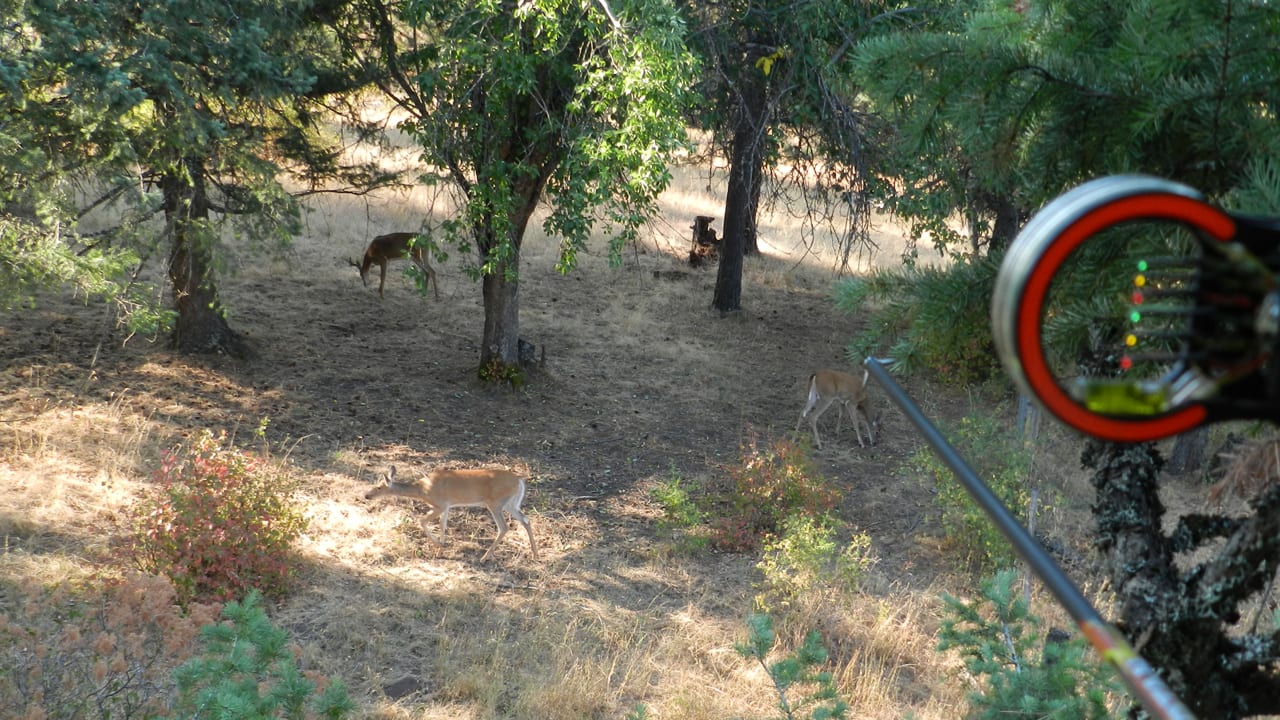
Is there really a need for speed?
Arrows Hit High Shooting Uphill/Downhill Due to Gravity
Knowing you’ll hit high on uphill/downhill shots is likely enough, but how high and at what ranges and angles? We also have tilt-compensated laser rangefinders to provide corrected numbers. But just so you know, how high you hit at various ranges and angles is a function of geometry, not gravity.
On tilted shots, an uncompensated rangefinder measures straight-line yardage between shooter and target. Yet the range that matters is determined by drawing plumb/vertical lines through shooter and animal and measuring the flat/horizontal space between those lines. For instance, the actual distance to a deer shot from an elevated treestand—or cliff—is the distance from the base of the tree (or cliff) to that animal. On an uphill shot, the actual distance is measured from the animal to the tree trunk well above your head and on the same level as the animal. In practice, without compensated rangefinder you can more accurately estimate actual range from stands by looking straight across, on the level, to tree trunks deer stand beneath.
Laser Rangefinders Make Eye-Ball Ranging Skills Unimportant
I’ll make this short – Laser rangefinders aren’t infallible. Vegetation easily deflects laser beams, making rangefinders ineffective in many situations—a bull elk walking through brush but offering ample shooting holes, a buck bedded in plain sight but behind waving grass stems.
Laser rangefinders also require time—fishing the unit from a pouch, popping a range, and returning it to storage (you can’t just toss it) before you can even hook up your release and pull into full draw. Life moves fast in the real world. Sometimes converting on a trophy of a lifetime requires decisive action. Many of my most cherished trophies didn’t volunteer the time required to deploy laser rangefinders. Eye-ball range-judging skills are still crucial to bowhunting success! I use a laser rangefinder whenever possible, but am ready to rely on old-fashioned skills when demanded.
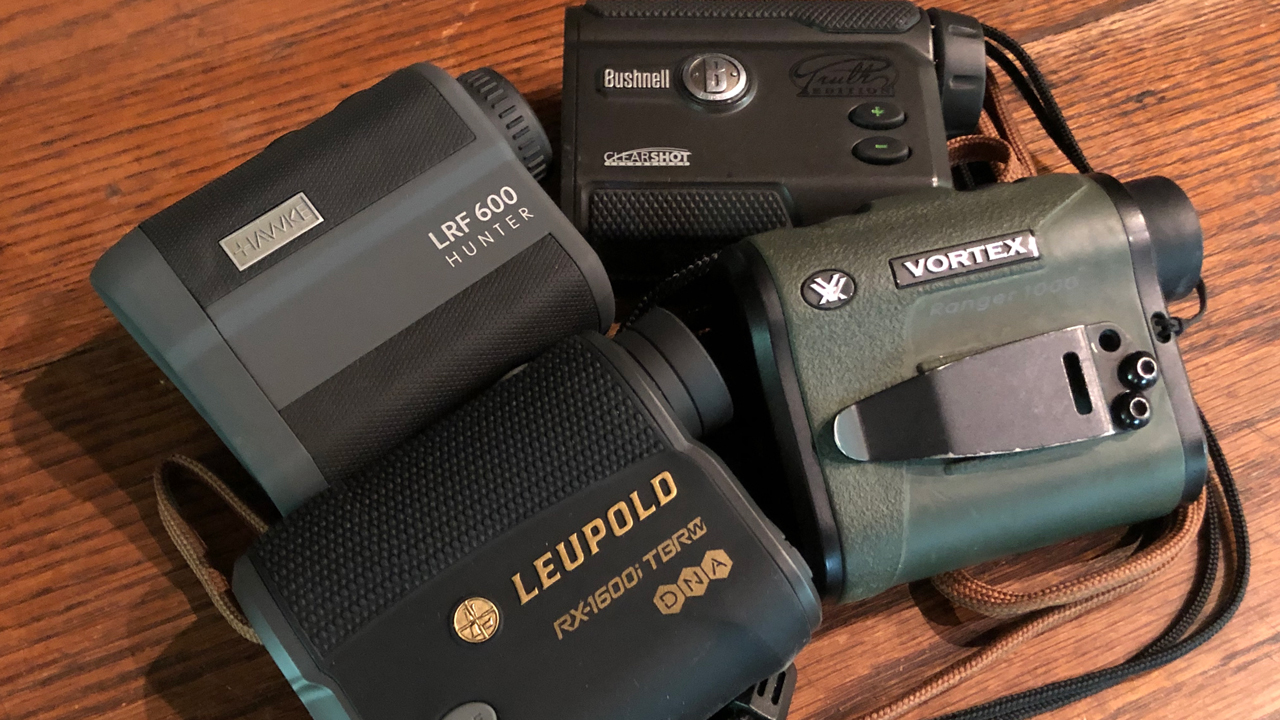
You can have a pile of rangefinders in your arsenal, but can you judge distance in the field without them?
Baiting Desensitizes Animals to Human Scent
This came up recently while bear baiting locally with a friend, the assumption that the introduction of bait, touched by human hands, makes scent control and watching the wind unnecessary. Where do people get these ideas? Yes, handling bait introduces human scent, but the notion a sharp-nosed animal cannot tell the difference between residual human scent left on food and an entire stinky person sitting nearby is patently absurd. Of course they can tell the difference! Enough said.
Maximum Effective Range is Absolute
“I’m 100 percent to 50 yards,” you might hear a bowhunter brag. I heard this a lot while guiding professionally. Oh really? Under what conditions?
Every single bowhunting encounter includes highly-variable scenarios.
“I can hit a 3-D target at 50 yards under ideal conditions within the calm conditions of my own summertime backyard” should in no way be confused with “I can kill a big-game animal at 50 yards every time.”
Weather (wind especially), an animal’s current disposition (is that animal wound up or perfectly calm?), shooting obstacles and especially nerves all conspire to erode maximum effective range. Confidence gained through smart practice is important to making demanding bowhunting shots, but this should never turn into arrogant cockiness. Every shot is different. Ask yourself before each shot—be that 25 yards or 50—“Am I 100 percent confident of making this shot?” Any hesitation whatsoever should signal you to pass the shot altogether, waiting for a better opportunity.
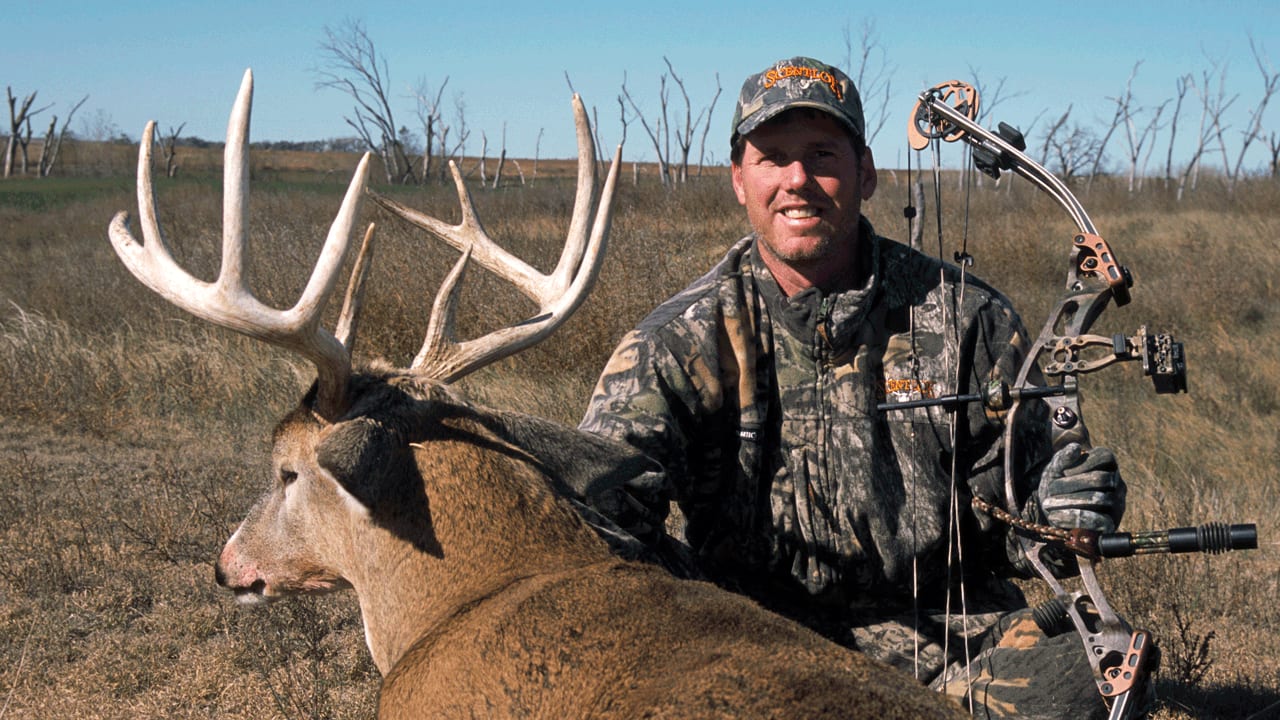
Regardless of what you can do in the backyard, you should only take shots on game you are 100% confident in.
Shooting as Much Draw Weight as Possible is Best
You see it at local 3-D shoots regularly, someone pulling so much draw weight they sweep every point of the compass while struggling to break into let-off. Of course, the obsession with speed is mostly to blame. There’s also ego and bragging rights involved. Modern compounds, set to 50 pounds and paired with an appropriately-spined carbon arrow, generate speeds we were perfectly happy with just 10 years ago. So why saddle yourself with excessive draw weight to gain a bit of velocity, at the expense of attention-grabbing draw cycles? And why do so many equate draw weight to self worth?
Add fatigue during a physical hunt (mountain game comes to mind) or cold-stiff muscles while sitting treestands and you might find yourself unable to draw your bow at all. Here’s a sound rule of thumb: You should be able to hang your pin on a chosen aiming point, pulling your bowstring into anchor—slowly and smoothly—without that pin moving off the spot. In fact try sitting flat on the ground with legs spread and perform the same maneuver, again pulling into anchor slowly and smoothly. If you cannot, you’re shooting too much draw weight.
You, Too, Can Kill Monster Bucks, By Following Expert Advice & Buying the Right Gear
Ever notice how nearly every whitetail “expert” lives in Midwest whitetail havens, where 2 ½-year-old bucks make Pope & Young records, hunting pressure on their private farms is minimal and firearms are largely erased from the equation? So each and every year they kill bigger bucks than you’ve witnessed in an entire lifetime of hunting. This makes them experts, uniquely qualified to offer sage advice on how it is done, usually in a five-step format including mandatory products selection.
Hate to burst bubbles, but when you live in average portions of whitetaildom (or aren’t privy to large, exclusive, heavily-managed chunks of real estate) such expert advice is nothing short of worthless. Following their advice isn’t going to help tag monster bucks where monster bucks don’t exist. Aggressive rattling, decoying, magic-potion buck lures and the like just aren’t going to do the trick in habitats with buck-to-doe ratios so unbalanced rutting competition is nonexistent, and hunting pressure is such very few bucks reach full maturity to develop the confidence required to respond to such ploys.
Sour grapes? Nope, I learned to enjoy bowhunting on my own terms long ago. But I think the entire bowhunting industrial complex needs to make more of an effort to cease instilling discontent and inferiority complexes by promoting dreams that don’t exist in the vast majority of backyards.
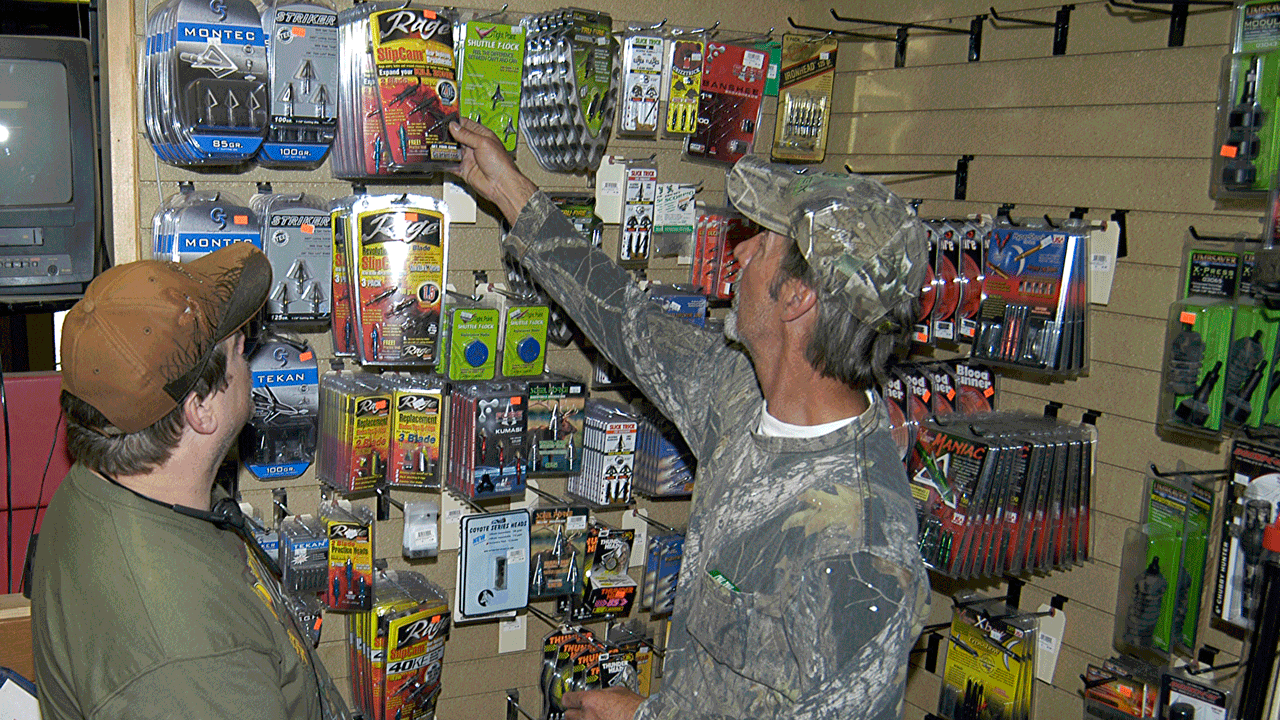
Be confident in the gear you shoot. This comes from personal experience, not just from what you see or hear on outdoor TV.
The Only Way to Shoot Better is to Shoot More, More, More
Archers frequently tell me about how much they shoot, as in “I shoot 100 arrows every day.” Practice is important to bowhunting success, as shooting bows consistently requires developing a high degree of muscle memory. But understand; firing 100 poorly-executed shots generally does more harm than good, ingraining sloppy habits that will circle back to bite you during clutch encounters with game.
Smart practice is all important. Sure, I engage in volume shooting early in the summer (usually starting July 1) to develop muscle tone and control, and while fine-tuning and solidly sighting an outfit. But with seasons nearing I concentrate wholly on quality over quantity. For me this means adopting a quick shot list until it is nearly subconscious, striving to relax during each shot, the ability to turn intense concentration on and off at will, avoiding rushing any shot, questing for a true surprise release and applying thorough follow-through. In short, executing a perfect shot, one arrow at a time, becomes more important than how many arrows fired. If you’re struggling, own up to it and employ a shooting coach to help you through debilitating problems such as raging target panic. It is time, and money, well spent.
Debunking Bowhunting Myths – Conclusion
The bottom line – there’s a lot bull out there among the hunting industry. You have to be careful and cautious what you buy into. Is it fact, or just a slick marketing scheme? Enjoy the game. Don’t be afraid to learn lessons by trial and error and doing it on your own. While you can learn a lot from the wisdom of hunters that have come before us, you’ll never beat the lessons you learned by doing it yourself.

 By
By 